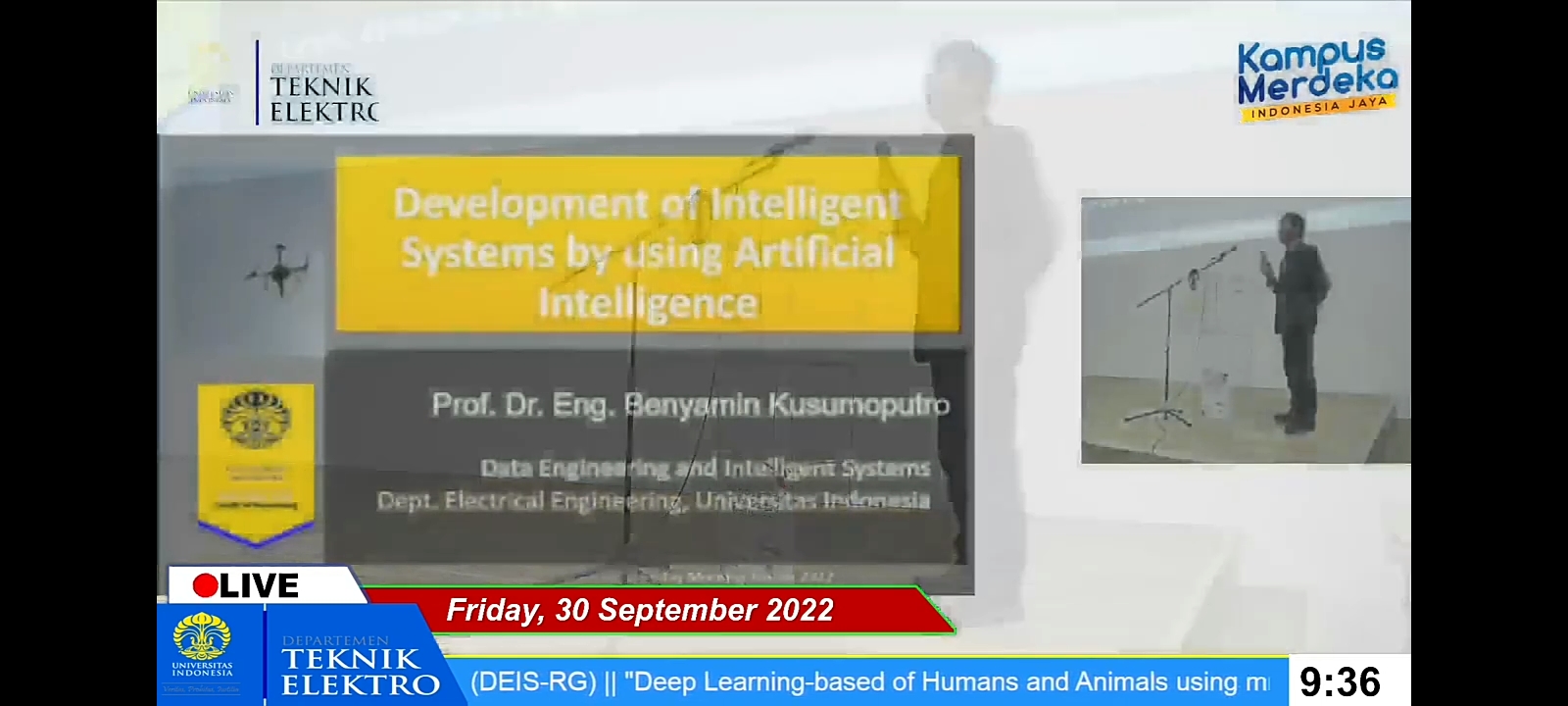DTE FTUI’s FMF activities were held again and entered Series 3. This week, DTE FTUI’s FMF presented speakers from the Data Engineering and Intelligent Systems Research Group (DEIS-RG) chaired by Prof. Dr. Drs. Benyamin Kusumoputro., M.Eng. As usual, the FMF on (30/09/2) was held at the MRPQ Auditorium, DTE FTUI.
“DEIS-RG is a research group for Intelligent Systems, where Intelligent Systems data is engineered so that it is entered for Intelligent Systems. What will be obtained from Data Engineering are action recognition, human detection, and human tracking,” said Prof. Benjamin while giving a speech.
On this occasion, Arsyad Ramadhan Darlis, a DTE FTUI Doctoral Program student and also a member of the Data Engineering and Intelligent Systems Research Group (DEIS-RG) was the presenter at Session 3 of the FMF. He explained the topic “Deep Learning-based Classification of Humans and Animals using mmwave Radar”. This time the FMF was also moderated by Yus Natali.
The research conducted by Arsyad was motivated by events during the aftermath of the disaster, in which ruins covered humans and non-human objects. When monitoring the system, animals make mistakes in saving humans from behind the rubble. So, we need a wireless system that can classify human and non-human objects, especially animals, after a disaster.
In addition, a sensor with a higher resolution is also needed. In theory, as the reference gets higher, the range resolution. Range Resolution This will indicate the level of the system in distinguishing different objects. UWB Radar 24 GHz will be used, and mmwave Radar will be used to increase the resolution in the 27 GHz frequency.
“The classification process method used is CNN-based double veceiver mmwave radar. This classification method is used to increase accuracy which far exceeds methods that use BPNN or deep learning. The average accuracy rate is 99% in 3 class classification, 82% in 6 class , and 68% in 10 classes. This method can also outperform several other studies. In addition, this method can also solve the problem of false alarms in post-disaster human rescue applications,” said Arsyad.
***
Bureau of Public Communications
Faculty of Engineering, Universitas Indonesia

